Cinder block: what is it, varieties and properties

Cinder block is one of the most popular building materials. They not only build houses from it, but also make reliable fences and partitions. Often, a cinder block is used in the construction of solid country cottages. Today we will take a closer look at this famous building material and its varieties.
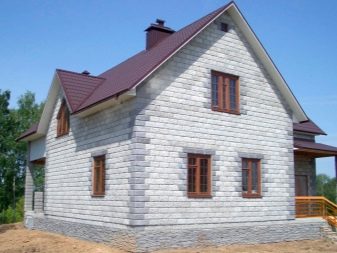
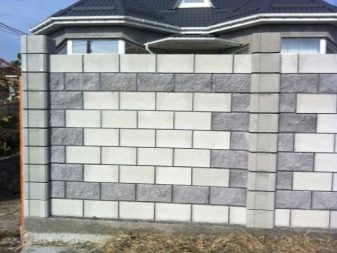
What it is?
Cinder block is a popular building material that is made using special shapes and vibrocompression.
From such raw materials, you can build a very strong and reliable house or use it when erecting load-bearing walls.
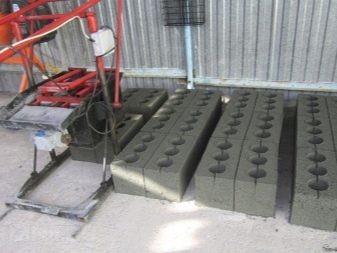
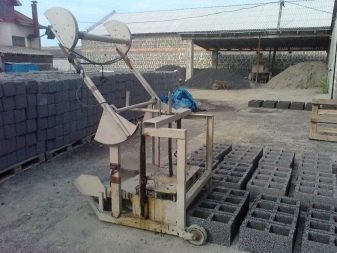
Advantages and disadvantages
Cinder block is a building material that has established itself as one of the most practical, reliable and strong. Due to its impressive size (especially when compared with ordinary bricks), such a block significantly reduces the time for the construction of a particular building.
Today this raw material is used very often. Each consumer wants to purchase the highest quality and wear-resistant material for the construction of a residential building or an outbuilding, so the cinder block is in enviable demand.
At this stage, you should familiarize yourself with all the positive qualities of such products:
- One of the most important advantages of a cinder block is its fire safety. This material is not only non-flammable, but also does not support combustion. That is why you can contact him without undue hesitation when it comes to building a bathhouse or a country house.
- Cinder block buildings are very strong and reliable, so they are not afraid of hurricanes or earthquakes. Of course, this feature also depends on the correctness of the construction work. In addition, such a block house will need to be supplemented with a high-quality reinforced belt. Steel rods, coupled with the stability of the cinder blocks, will do their job - the structure will be very wear-resistant.
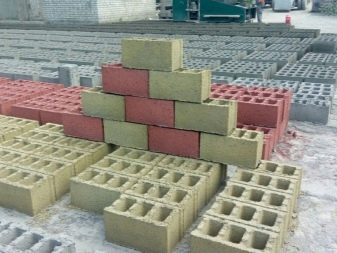

- To repair a home built from cinder blocks, you will not need to spend a lot of time and effort. All work in such buildings is carried out in a short time.
- Many craftsmen prefer cinder block, since any buildings from it are erected very quickly. This is due to the impressive dimensions of the blocks.
- Even inexperienced home craftsmen who have not previously encountered similar work will be able to lay cinder blocks.
- Cinder block is a versatile material. Many people use it not only for the construction of dwellings of various modifications. Gazebos, barbecues and flower beds made of similar elements look interesting and are easy to use.
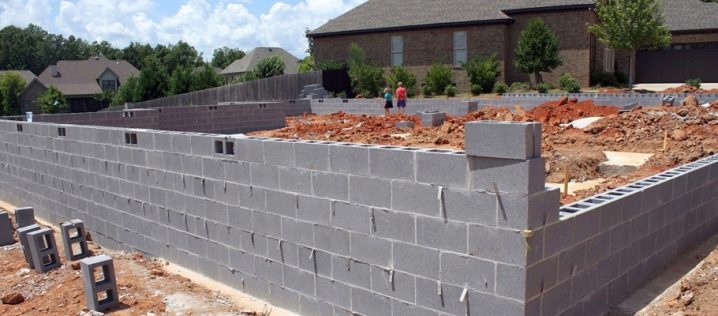
- Cinder block structures boast a long service life. On average, such block houses last at least 100 years without losing their useful properties.
- Another advantage that many consumers note in reviews is the low cost of construction work using a cinder block.
- Cinder block walls perfectly protect the premises from the penetration of unnecessary noise from the street.
- This well-known building material is made from a variety of raw materials. Every consumer will be able to find the right product.
- Separately, it is worth highlighting the decorative cinder block. This material can easily replace expensive cladding.
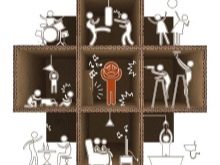
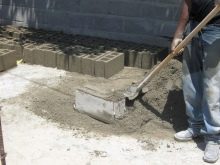
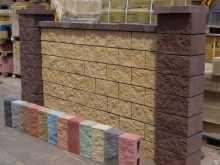
- During construction using a cinder block, little cement mortar is emitted.
- The weight of this block material is very small, since in terms of density it is inferior to ordinary brick. Due to this quality, cinder blocks can be used in the construction of buildings on lightweight foundations.
- Cinder block is a material that is completely uninteresting to rodents. In addition, neither mold nor mildew appears on it. For this reason, this material does not need to be treated with protective agents or antiseptics.
- This material boasts good frost-resistant properties.
- The cinder blocks can be transported both in pallets and simply folded neatly.

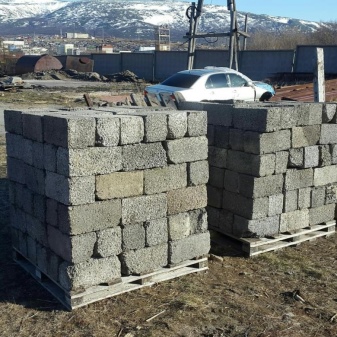
- Cinder block is a heat-consuming material. Thanks to this quality, houses built from such blocks are warm and comfortable.
- The forms of this material can be very different. Structures of various modifications are erected from them.
- Buildings made of this material are not afraid of temperature drops.
- There are several options for cinder block. This means that the right material can be selected for the construction of a wide variety of structures.
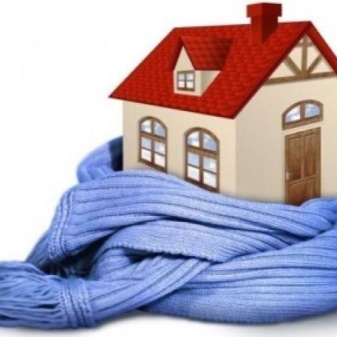
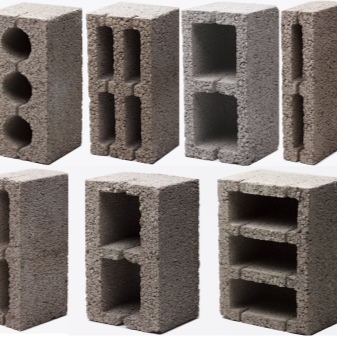
The pluses of the cinder block have made it terribly popular among consumers.
However, this building material is not ideal.
Unfortunately, it has many drawbacks:
- Not all varieties of cinder block are lightweight. There are also quite difficult options, which are not so easy to work with.
- If it is not possible to purchase a beautiful decorative cinder block, then you need to be prepared for the fact that aesthetic and original walls simply will not work out of ordinary blocks. As a rule, they look boring and formulaic.
- It is recommended to protect this material from moisture and moisture. This is due to the fact that the cinder block quickly absorbs them into its structure. Over time, this often leads to their destruction.
- Some types of cinder blocks are not environmentally friendly due to their composition. A certain percentage of harmful substances is present in the content of fresh slag.
- More attractive materials with a decorative structure are bad in that they are hygroscopic. They must be protected from the effects of precipitation.
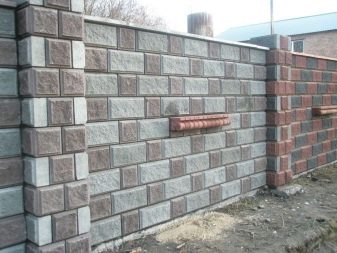
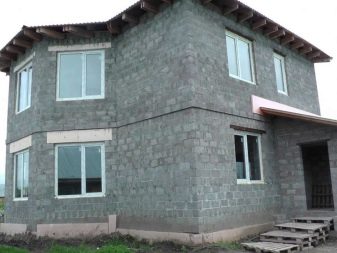
- Such building material complicates the process of laying cables and pipes. Because of this, during construction work, it is often necessary to turn to special equipment.
- It will not be possible to build a high building of several floors from a slag block. Too heavy structures can negatively affect the density and strength of materials.
- The construction of any buildings of their cinder block is distinguished by its technology. If you do not follow it, the consequences can be dire.
- This material is not recommended to be finished with a plaster mixture. Coating with this decorative material can cause the top layer from the cinder blocks to flake off.
- These materials are characterized by imperfect geometry.
As you can see, cinder blocks have more advantages than disadvantages. However, it can be noted that these materials are capricious and specific.
You need to work with them carefully and wisely. Otherwise, the result may be disappointing.
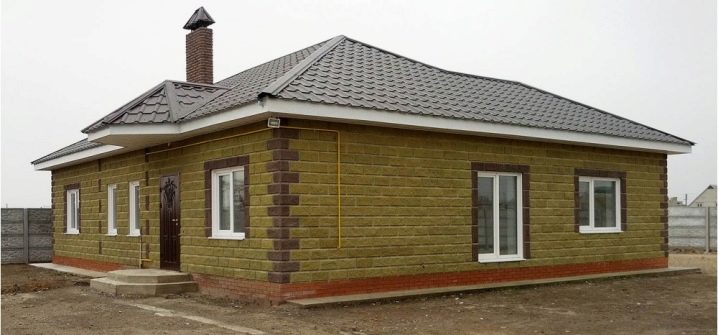
Specifications
Before proceeding to construction work involving cinder blocks, you should familiarize yourself with their main characteristics.
The standard dimensions of cinder blocks are 200x400 mm. There are also materials with a parameter less than 200 mm - semi-blocks, which are used in the construction of partitions.
There are two types of cinder blocks:
- hollow;
- monolithic.
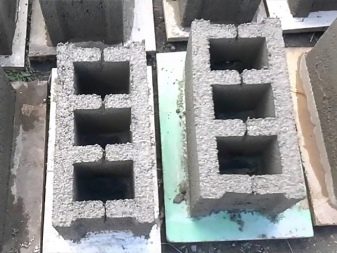

These materials are characterized by their level of cavity volume:
- 2 rectangular cavities;
- 4 rectangular cavities;
- 2 or 3 round cavities;
- cavities in 3 rows, having an arbitrary shape.
To find out what density the cinder block has, you need to take a closer look at its brand. It is in the marking of this building material that the value of the load that it can withstand per 1 sq. cm.
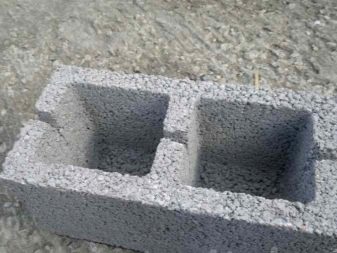
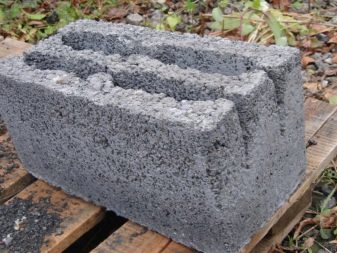
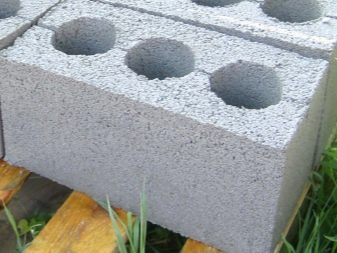
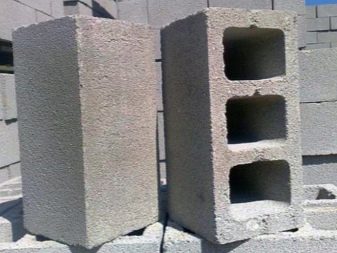
These materials differ not in the highest bearing capacity. That is why they are not used in the construction of multi-storey buildings.
In addition, cinder blocks are characterized by high hygroscopicity, therefore, it is allowed to work with them only if the following requirements are met:
- Construction work should only be started if the weather is dry.
- Laying should only be done on a high foundation (about 70 cm).
- The outer coating on the cinder block must be applied in a layer of 2 cm. You need to start this work immediately after the completion of construction.
- A house made of cinder blocks should never be left without a roof for a long time.


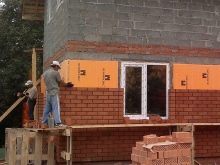
If we consider the parameters of the cinder block in more detail, then it is worth considering the following:
- The density of the blocks is 35-125 kg / cm2. If we are talking about materials marked M125 or M100, then foundation structures and basement walls are made of them. Materials marked M75 or M50 are used for the construction of walls / partitions. The stone of the M35 brand is used as a heater of another material, which takes on the main load.
- Such a block can easily “survive” 15-50 seasonal freeze / thaw cycles. This characteristic indicates the excellent frost-resistant qualities of the building material. To make the outer walls last as long as possible, they are made of 35-cycle frost-resistant cinder block. Buildings that will be in more severe conditions are usually built of stone with a given parameter of 50 cycles.
- The cinder block is characterized by thermal conductivity. This characteristic is expressed in such parameters - 0.35-0.48 kW / m * ºС.
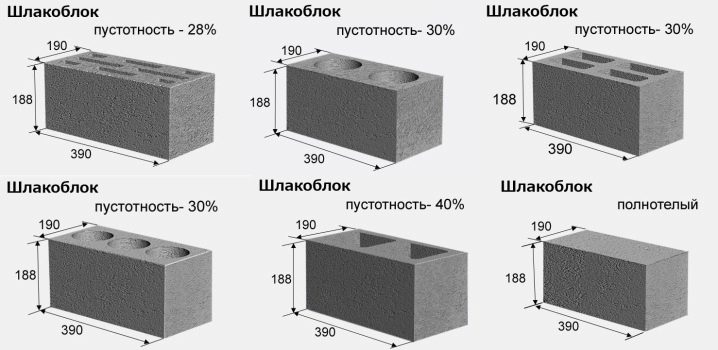
Various types of cinder blocks, which differ in their main purpose, have certain sizes and characteristics.
Let's consider them in more detail:
- A full wall unit (both empty and full) has the following standard dimensional parameters: length - 390 mm, depth - 190 mm, height - 188 mm.
- The so-called hollow wall half-block is available in two versions: 390x120x188 mm and 390x90x188 mm.
As for the weight of cinder blocks, it all depends on their structure and filling.
- full-bodied options can weigh from 25 to 28 kg;
- hollow specimens usually weigh about 18-23 kg;
- the weight of the half-blocks is 10-13 kg.
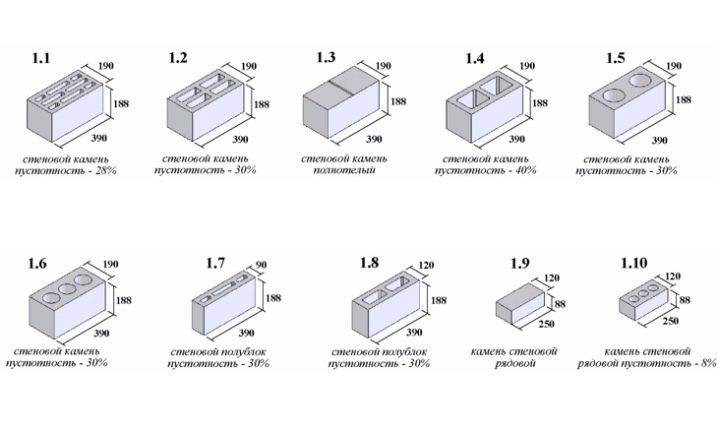
Composition
Do not think that the content of modern slag blocks contains only such a component as slag. The name of this building material has long been conditional.
Any of the following components can be used in the role of a filling ingredient in accordance with GOST:
- ash of volcanic origin;
- crushed granite;
- sand;
- broken glass / brick / concrete / hard cement;
- expanded clay;
- river gravel;
- crushed stone;
- sawdust;
- combustion waste such as slag or ash.
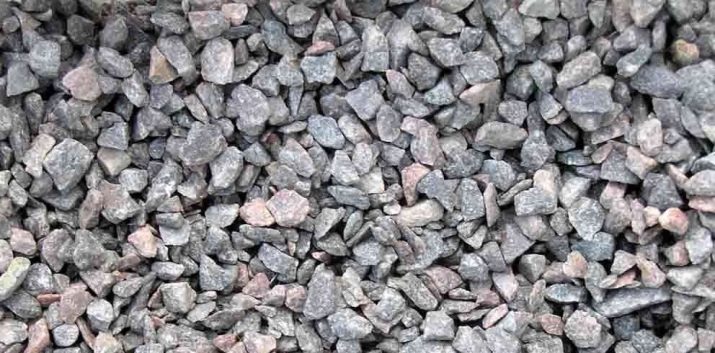
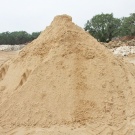

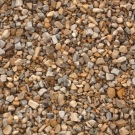
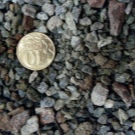
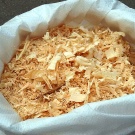
It should be borne in mind that the performance and properties of this material depend on the components used in its production. So, full-bodied elements are made from gravel, sand and pebbles. They turn out to be quite dense and heavy. Such materials will have excellent thermal conductivity.
In order to prepare a lighter concrete mixture, they turn to components such as perlite, slag and expanded clay. Elements with low weight and less effective thermal conductivity are made from the resulting composition.
The introduction of sawdust will make it possible to produce an environmentally friendly, heat-resistant, but fireproof unit. However, it will have to be additionally protected from the effects of precipitation.
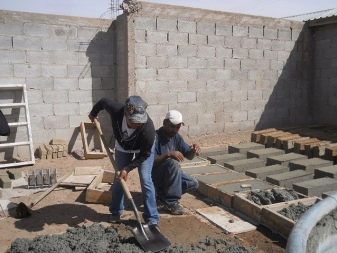
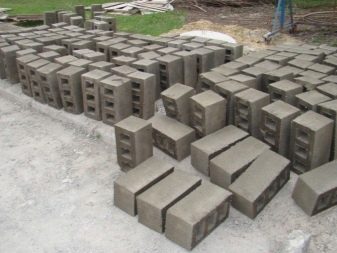
Views
There are several types of such blocks. Let's take a closer look at their properties and features.
Corpulent and hollow
Both options are very popular in modern construction. Full-bodied cinder blocks are used in the construction of foundation foundations, all sorts of columns, supporting structures of various buildings, as well as basement floors. The main role is played by their strength characteristics.
Hollow specimens are usually used to create walls and partitions in various buildings. They are distinguished by their modest weight, so we can safely say that they do not weigh down the structure at all.

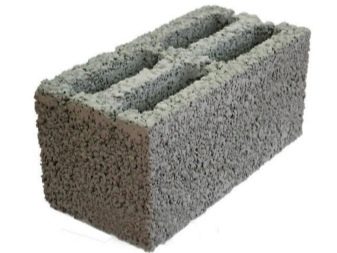
Decorative cladding
These building materials have appeared on the market relatively recently. They differ in that they have a decorative coating. It can be on either one or two sides. This layer of cinder block not only repeats a variety of textures (for example, natural stone or plaster mix), but also additionally protects the building material, making it as resistant to moisture and damp as possible.
Due to this equipment, there is no longer a need for finishing.
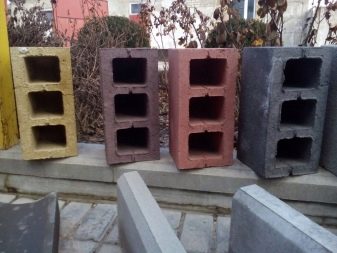
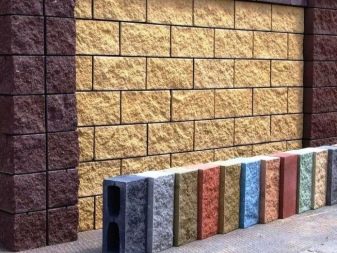
Partition
These types of cinder blocks are used in the construction of partitions. They boast a number of advantages, for example, they allow you to form walls with perfectly correct geometry, save mortar, are lightweight and are very easy to install.
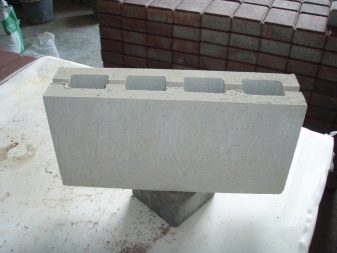
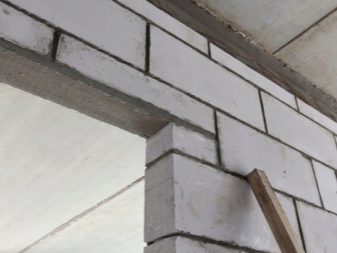
Colored
These types of cinder blocks are used along with simple materials. As a rule, it is they who are addressed when making strong fences, gables or pillars. The required shade of cinder blocks is achieved at the stage of their creation. To do this, add crushed red brick or multi-colored chalk to the composition.
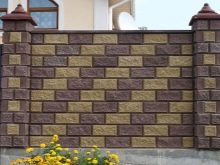
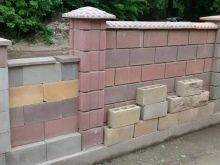
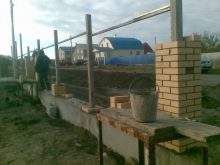
Fundamental
Otherwise, such materials are called artificial stone. It boasts excellent strength characteristics. In addition, the foundation cinder block boasts a very long service life. Over time, it not only does not shrink, but also does not undergo destruction (does not crumble). If you are laying cinder blocks in a reliable foundation structure, then you need to remember about the presence of a reinforced concrete tape. Its layer should be at least 1.5 cm.
The walls of the foundation cinder blocks are in all cases supplemented with waterproofing and heat-insulating materials. In no case should this stage be neglected.
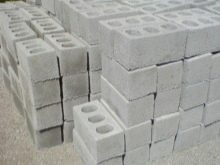
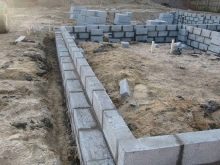
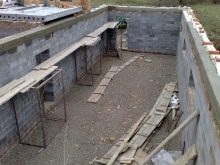
Chipped and torn
Relatively recently, interesting cinder blocks have appeared on the building materials market, the surface of which is decorative and imitates a kind of "torn" or chipped brick. Usually, similar options for cinder blocks are used for external cladding of fences or various buildings.
Cinder blocks are also divided according to their immediate basis. So, the most common are materials based on slag, arbalite and expanded clay.

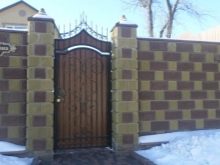
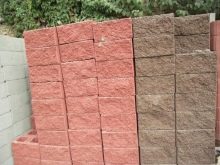
Slag based
The quality characteristics of slag-based blocks directly depend on the properties and characteristics of the feedstock. This mainly concerns the environmental friendliness of materials (it implies the presence of harmful toxic components in them). This parameter must be taken into account when choosing cinder blocks. They are distinguished by good thermal insulation qualities, and the service life is the same as that of ordinary bricks. However, it should be borne in mind that the last parameter depends on the direct composition of the filling component.
If you make a choice in favor of high-quality blocks and subsequently correctly finish them, then they will serve you for a very long time, and in many of their parameters will surpass brickwork.
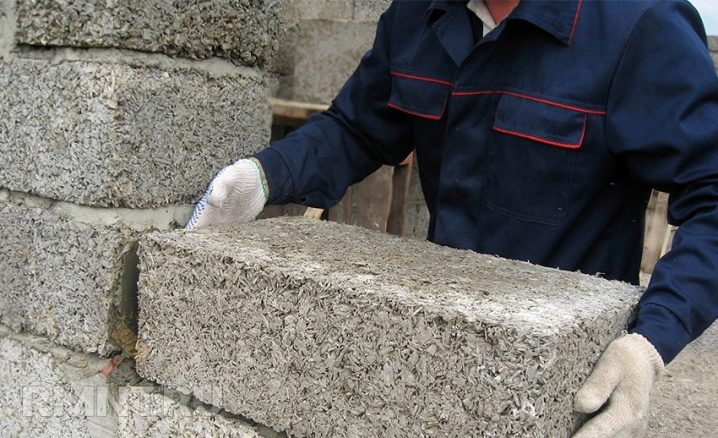
Arbolite based
Special types of cinder blocks, based on such an element as arbalite, have excellent thermal insulation characteristics. However, it must be borne in mind that these materials cannot boast of a long service life, which is their significant drawback. When the latter parameter is improved, the environmental friendliness of the materials usually decreases.This is due to the addition of special tools that affect the strength characteristics of the blocks. These components are not always environmentally friendly.
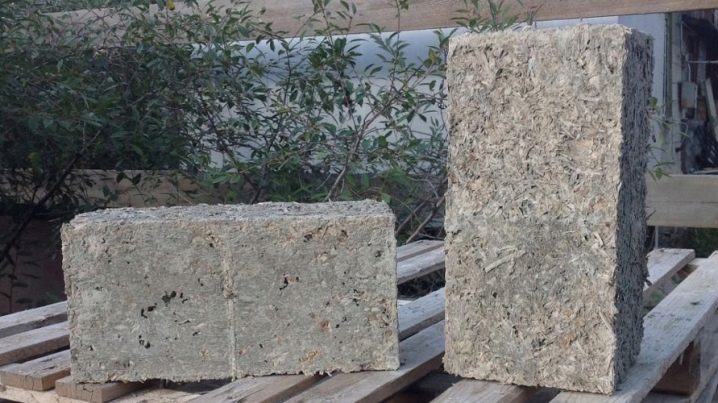
Based on expanded clay
Cinder blocks, which are based on expanded clay, are considered environmentally friendly and safe. These building materials are distinguished by excellent thermal insulation characteristics, coupled with a fairly long service life. The advantages of such cinder blocks are precisely the expanded clay base. Such raw materials are lightweight, and there are natural voids in their structure in large quantities.
Most experts say that expanded clay cinder blocks are the ideal choice for any craftsman (both experienced and beginner). These statements are confirmed by statistical data - over 50% of European houses are being built from such blocks.
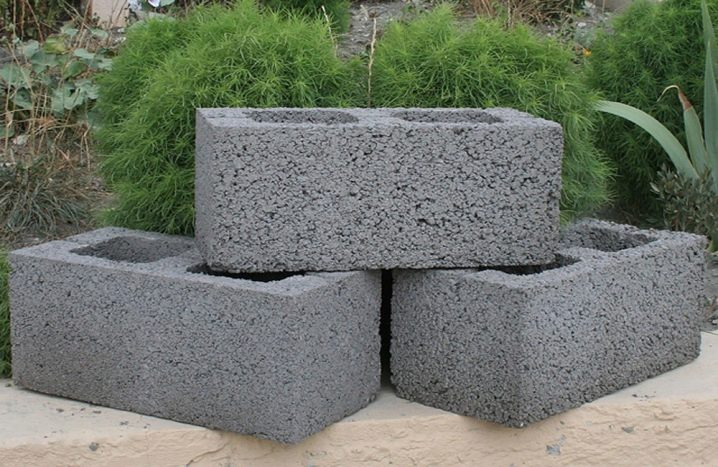
Stamps
When choosing cinder blocks for any construction work, it is very important to pay attention to their marking. This indicator indicates the load that the block is able to withstand. For example, a material with a brand with the designation "35" will easily transfer loads of no more than 35 kg per 1 sq. cm.
There are such brands of cinder blocks:
- M-35 kg / cm2;
- M-50 kg / cm2;
- M-75 kg / cm2;
- M-100 kg / cm2;
- M-125 kg / cm2.
Cinder blocks marked "35" are usually purchased for the purpose of insulating another base material, which takes on the main load. Instances marked M-50 and M-75 are often used to install walls and partitions. Blocks with strength values M-100 and M-125 are suitable materials for the manufacture of bases of various structures. In addition, they are suitable for the construction of foundations and load-bearing structures. From this information, it should be concluded that the greater the marking of the strength of the blocks, the more significant the load it can withstand.

How is it different from other materials?
Currently, block building materials are among the most popular and demanded. Structures made from them are found at an enviable frequency. Today there are many types of blocks, and many users are wondering how cinder blocks differ from other options. We will try to answer this question.
From sand blocks and expanded clay blocks
Sand blocks and expanded clay blocks are made in the same way as cinder blocks. As for their ecological characteristics, here the latter are inferior to sand and expanded clay options, because the raw materials for their production are sand and expanded clay, which boast a pure composition without any chemical and aggressive substances. Cinder blocks are usually made from various industrial waste.
In addition, it should be noted that sand blocks and expanded clay blocks are not afraid of the effects of dampness and moisture, and also have good strength characteristics. Cinder blocks are inferior to them in these parameters.
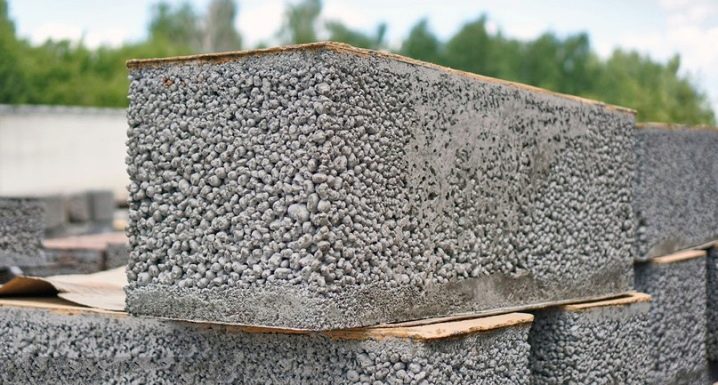
From aerated concrete and aerated concrete
It is also necessary to understand how the cinder block differs from aerated concrete and gas block. In fact, the latest materials are identical. In their manufacture, an important point is the appropriate chemical reaction that provides a porous structure. Cinder blocks are made mechanically - by pressing.
Based on the parameters of these products, one can come to the following conclusions:
- cinder blocks are denser, harder and stronger than gas blocks, but inferior to them in thermal qualities;
- cinder blocks are less frost-resistant than aerated concrete.
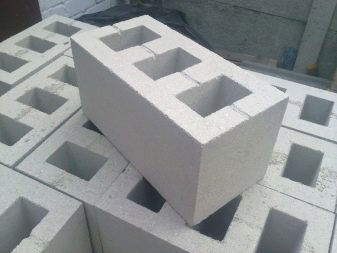
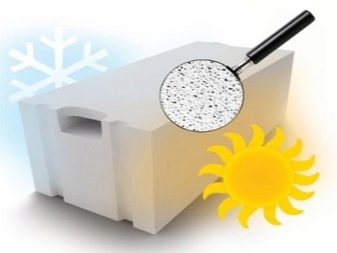
From foam blocks
Foam blocks today are in demand materials, from which they build not only houses, but also all kinds of outbuildings. These materials are similar in many respects to cinder blocks.
The standard dimensional parameters of cinder blocks when laying are 4-5 bricks, while standard foam blocks can replace as many as 7-8 bricks.However, one must take into account the fact that the foam block is inferior in cost to cinder blocks. The same cannot be said for its thermal insulation performance and weight.
The foam block is more convenient and hassle-free in terms of transportation than the cinder block, and its installation is faster and easier. Otherwise, such a building material is called an ecoblock. It has a higher strength factor than the slag version.
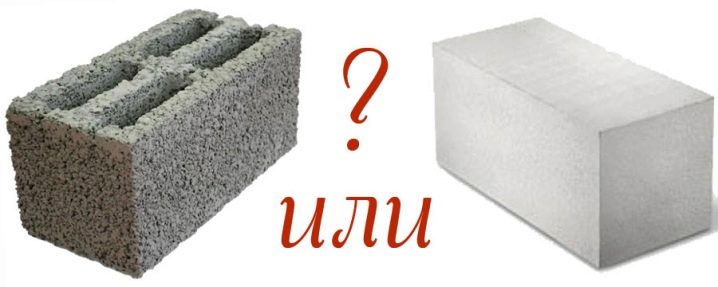
From brick
The lion's share of consumers is interested in how the cinder block differs from the good old brick. It's no secret that the latter is extremely popular and has been used in construction for many years. In terms of its operational characteristics and parameters, the cinder block is in many ways similar to a brick, and in some issues even surpasses it (this concerns strength properties).
In rare cases, masonry bricks have a strength grade greater than M-100. Cinder blocks are also produced with higher markings - M125 or M-150. In addition, one cannot fail to mention that it is very difficult to make a brick with your own hands (as a rule, it is almost impossible without the appropriate knowledge and equipment), and it is quite possible to make cinder blocks yourself.
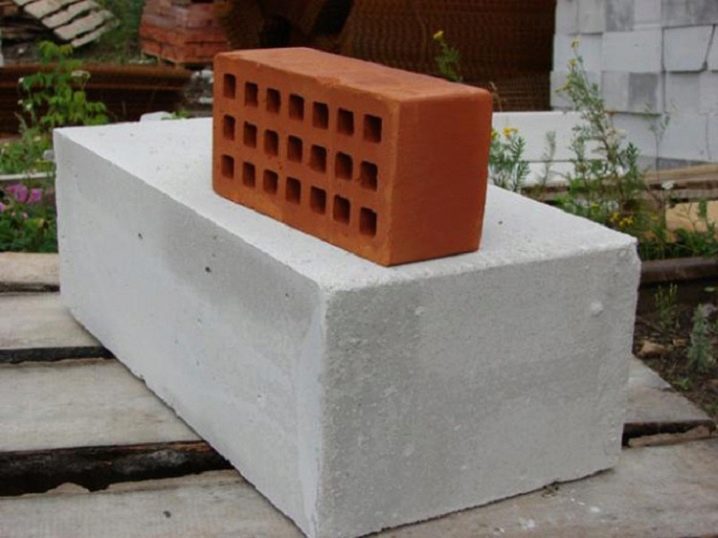
Useful Tips
If you decide to build a house from a cinder block, then you need to first build the strongest and highest foundation possible. Experts recommend turning to tape options.
We must not forget that cinder block walls are very dense. Because of this, many craftsmen are faced with the problem of laying pipes and electrical wiring. As a rule, specialists in such cases turn to special equipment. That is why it is advisable to think about carrying out these works in advance if you are going to do this yourself.
When choosing this building material, always pay special attention to its filler. The best options are with shell rock, expanded clay, sawdust and gravel. They are safe and environmentally friendly.
Be sure to make sure the integrity of the cinder blocks during the selection process. In addition, you should pay attention to the identity of the geometry of several elements located in different pallets.
Inspect the outer walls of the cinder blocks before purchasing - they should be flat. Also, inquire about the storage conditions of the materials.
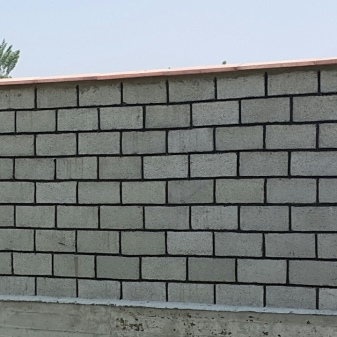
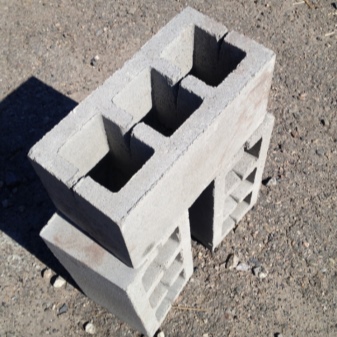
As for the transportation of cinder blocks, pallets are most often used here. However, you can turn to simple storage as well. Blocks can only be stored on pallets. They should be placed under a canopy to protect them from the harmful effects of various atmospheric precipitations. Hollow elements should be placed with the voids down.
Experts say that it is quite possible to check the quality of the cinder block using an ordinary 15 mm nail. - try to stick it with your own hands into the material below. If a nail enters it, it will indicate that the blocks are not of the highest quality.
Please note that cinder blocks that were produced without the use of a special vibrator, in terms of their strength characteristics, are much inferior to elements that were made with a similar technique. They can only be used for the construction of uncomplicated non-residential premises.
If you decide to make your own cinder blocks, you can always add certain missing components. The main thing is not to forget about the solidification time of the raw material, as well as the required proportions.
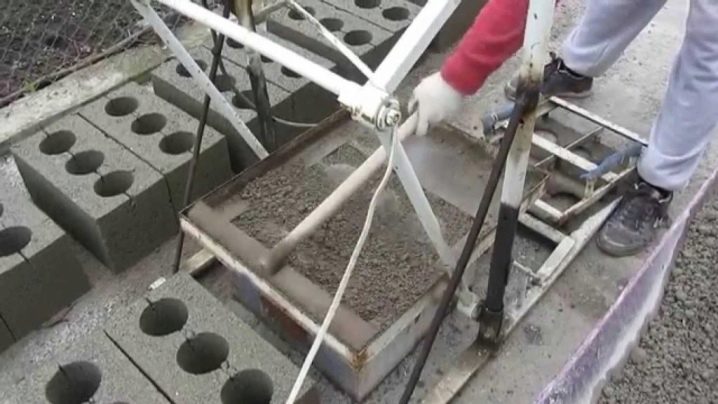
Cinder blocks cannot boast of high thermal insulation characteristics, like, for example, the same foam blocks. Therefore, if you are building a residential building from these materials yourself, then you will have to pay special attention to the thickness of the seams. If they turn out to be too thick, then the building will turn out to be cold - the heat will simply go out through the seams.
An overly thick layer of mortar (more than 1.5 cm) will negatively affect the thermal insulation qualities of the walls.
If you decide to finish the cinder blocks with a plaster mixture, then first you need to prepare them for these works. Otherwise, the plaster simply won't stick to the blocks.
Before proceeding with the construction of a particular building from cinder blocks, you need to correctly calculate their required number. To do this, you should calculate how many parts there will be in 1 m3. For example, a material with parameters 390x190x188 mm can be calculated in this way: 39x19x18.8 = 13930; 1,000,000 (cube volume): 13930 = 71. There will be 71 blocks in 1 m3.
Do not skimp on purchasing cinder blocks. Excessively cheap materials can be of low quality or even hazardous from an environmental point of view.
The pros and cons of the cinder block are described in the next video.













Thanks. I remembered a lot about making blocks and bricks.
The comment was sent successfully.